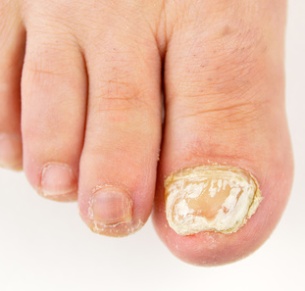Find a Mold Specialist Now
Click or Call, Toll-Free 24/7
Scopulariopsis mold in the home
Scopulariopsis is a very common, fast-growing mold that is usually brown in color but can range from white or cream to gray or black. Because mold can vary in color so much, though, you can’t tell what kind of mold you have just by looking at it. Many kinds of mold look similar to this one.
 Mold on Drywall
Mold on DrywallThis strain of mold is often found in soil, but it may also be found indoors on food and on household materials like paper, wallpaper and drywall. Like other types of mold, it spreads easily from one area to another. Mold can also grow in difficult-to-reach places, like inside walls. If you find mold growing on your wallpaper, there is a good chance it is also growing on the wall beneath that paper. If there is mold growing on the wall, it is possible there is also mold growing inside the wall. If you find mold in one area of your home, we recommend searching your entire home to make sure you don’t miss any. Later we’ll tell you how you can get a free mold inspection of your home.
Damage to Your Home
All types of mold can cause damage to your home and this one is no exception. It will break down materials containing cellulose, like drywall, quickly. The walls of your home can begin to crumble around you. Since the mold spreads rapidly, it can do a great amount of damage to your home in a short period of time. You can read more about how mold damages a home.
Health Problems Related to Scopulariopsis
Like all molds, this one can cause health problems. It can cause respiratory problems such as sinus infections, bronchitis and pneumonia. It can trigger asthma attacks. Other mold-related infections may also occur. Here is more information about common mold-related health problems.
A common health problem caused by scopulariopsis is onychomycosis, an infection of the fingernails and toenails. It causes the nails to become thick and brittle. They may turn yellow or brownish in color and begin to crumble.
While onychomycosis may sound like only a minor infection, it can be quite painful. It can make walking difficult. It also interferes with circulation, which can be particularly problematic in diabetics. Secondary bacterial infections may result. The fungal infection can also spread to other parts of the body and, possibly to other people as well.

Onychomycosis can also be difficult to treat and it may take more than four months to completely eliminate an infection. Treatment may include topical antifungal medications applied to the infected nail(s) or oral antifungal drugs. The Mayo Clinic says that treatment is most likely to be successful with a combination of topical and oral medications, but oral antifungal medications carry with them the risk of side effects that include damage to the liver. Treatment is more difficult in people over the age of 65 and they may not respond well to the typical medications. Unfortunately, senior citizens are also more susceptible to mold-related health problems, including onychomycosis.
If you’re experiencing symptoms of mold-related health problems, see your doctor. Don’t put off seeing a doctor because you’re embarrassed about discolored, crumbling nails or because you think something like that isn’t worth seeking medical attention. Delaying treatment will only allow your condition to worsen.
The appropriate treatment will depend on the type of mold-related health problems you are experiencing, as well as any other health issues you have or medications you take. Discuss your treatment options with your doctor, including the potential side effects of any medications he or she recommends for you.
Removing Scopulariopsis from Your Home
In order to protect both your home and your health, you’ll need to remove the mold from your home as soon as possible. You can schedule a free in-home consultation with a mold remediation professional that will visit your home, inspect for mold and help you make sure you’ve located all affected areas. They will answer your questions and inform you about the work that needs to be done in your home. A free consultation is a great way to get some expert advice about the work that needs to be done in your home, whether or not you plan to do the work yourself. Follow this link to find experienced mold remediation professionals offering free consultations in your neighborhood. Check with your doctor before deciding to do the work yourself if you are experiencing mold-related health problems.
Return From Scopulariopsis To Our Main Mold Types Page




